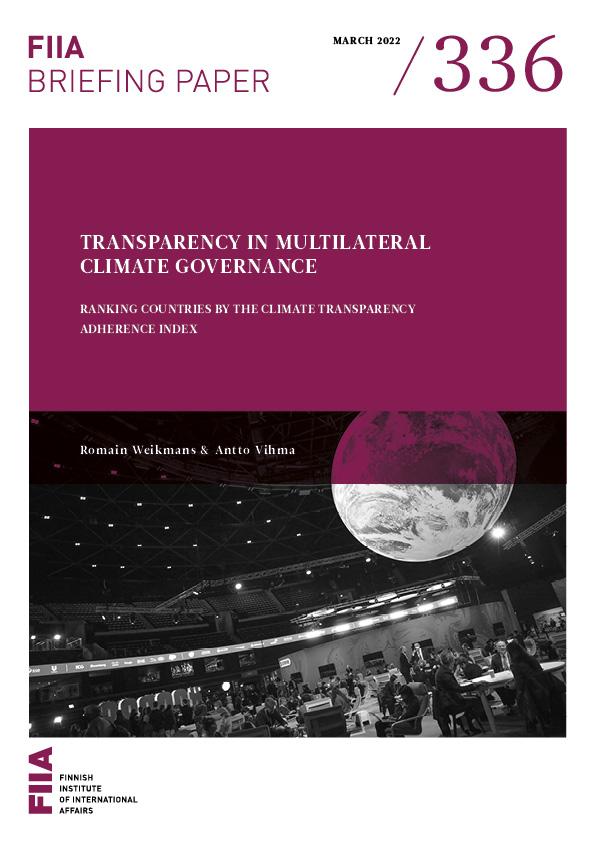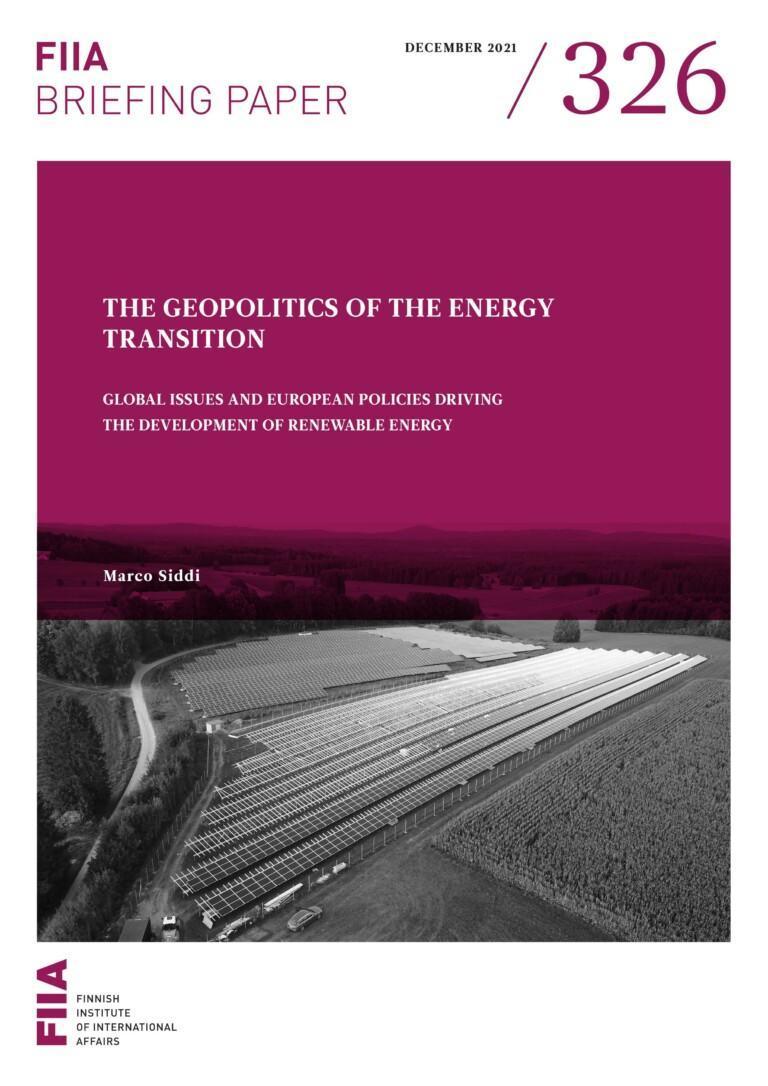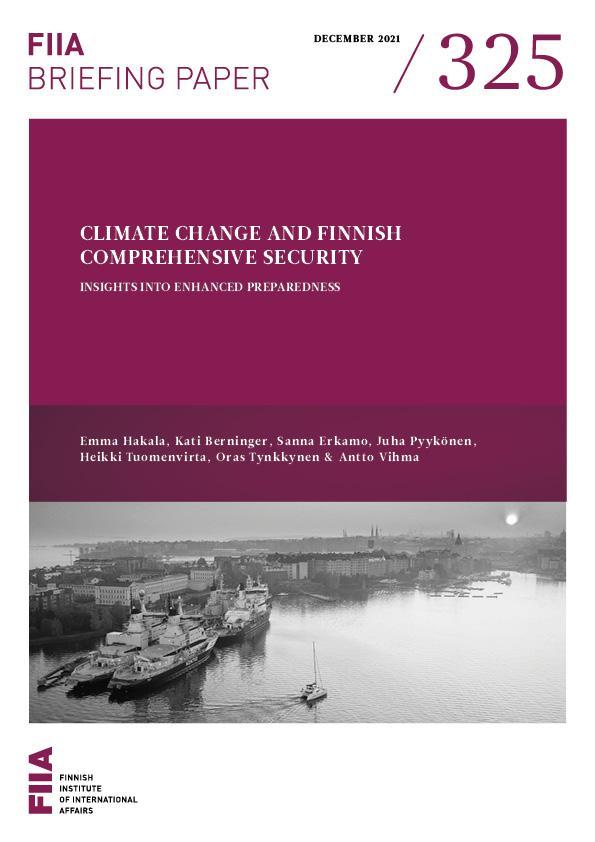
Reporting and review arrangements are often portrayed as vital for keeping countries informed about each other’s climate intentions and actions. They are set in order to enhance accountability and mutual trust, ultimately securing more ambitious climate actions.
This Briefing Paper provides an updated analysis of state engagement with the reporting requirements under the United Nations Framework Convention on Climate Change (UNFCCC). The analysis shows that the performance of countries continues to vary greatly.
Understanding current trends of engagement with reporting is crucial for informing the effective implementation of the Paris Agreement. Indeed, the Agreement calls for an “Enhanced Transparency Framework” to be implemented by 2024. This represents a major ramping up of transparency obligations, especially for developing countries.
Significant challenges lie ahead in the implementation of ever more stringent transparency requirements. Political reluctance to report on national climate actions (or lack thereof) to multilateral institutions such as the UNFCCC is a likely obstacle to the functioning of the new transparency framework. Technical obstacles may also limit the disclosure of information.
The Briefing Paper is part of the TRANSCLIMavautuu uuteen ikkunaan project, funded by the Academy of Finland.
Introduction
How much greenhouse gases are countries emitting? Are states on track to meet their mitigation targets? Will rich nations fulfil their promises of providing support to poor countries to tackle the effects of climate change? Accountability and mutual trust are considered crucial in international climate negotiations. By keeping countries informed about each other’s climate intentions and policies, transparency could also stimulate more ambitious climate actions in the future.
Under the United Nations Framework Convention on Climate Change (UNFCCC), carefully crafted arrangements specify when, how and what kind of information is to be disclosed by countries. This includes how countries report on their emissions, their climate mitigation policies, international financing, and adaptation measures. Some of the reported information is then subject to a process of technical review that assesses its conformity to UNFCCC reporting guidelines.
The core idea behind transparency arrangements in global governance is that the information provided by states, and the vetting of this information by international bodies, can shed light on the performance of states against their international commitments.
In general, reporting is a relatively non-confrontational way of inducing states to behave in accordance with their commitments. However, in the UN climate regime, the mandatory reporting and review arrangements have been an intensively negotiated issue over the years.[1]
Current reporting provisions are highly differentiated for developed (Annex I) and developing (non-Annex I) countries.[2] This differentiation, which can be traced back to the early 1990s, reflects strong historical reluctance from developing countries to take on reporting commitments for a problem that they did not consider to be of their making. In practice, this means that developed countries have to report more information, more often, and with more precision than developing countries. It also means that their reports are subjected to more frequent and in-depth review than those submitted by developing countries.
The extent to which countries are adhering to current reporting requirements remains somewhat underinvestigated and underdiscussed. This is curious as transparency itself is a buzzword in governance, and widely considered a crucial component of the Paris Agreement. It is vital that the carefully designed transparency mechanisms actually work in practice.
This Briefing Paper provides an overview of the most recent trends in country engagement with mandatory UNFCCC reporting. The focus is on the UNFCCC decisions implemented since 2014. These require developed countries to produce Biennial Reports and developing countries to generate Biennial Update Reports.
This work is timely as the Paris Agreement’s “Enhanced Transparency Framework” – to be implemented in 2024 – will build on and strengthen current reporting and review arrangements. The new framework will be applicable to all Parties, albeit with some flexibility offered to developing countries. It thus represents a notable shift away from the highly differentiated approach to transparency that currently prevails under the UNFCCC, and a major ramping up of transparency obligations for developing countries.[3] The Briefing Paper provides insights into the challenges that this implementation of the Paris Agreement is likely to face.
The following sections present an update of the Transparency Adherence Indices elaborated by Weikmans and Gupta (2021). The analysis makes the countries’ performance in climate reporting visible and comparable.[4]
The scores of these Indices are drawn from the formal review processes organized under the UNFCCC. They do not rely on an independent re-assessment of Parties’ adherence to reporting obligations. It is also important to mention that these Indices only reflect adherence to mandatory reporting requirements. They therefore do not reflect the extent to which countries are performing in terms of reporting on financial support needed and received, or on their adaptation actions. Finally, extreme caution should be exercised in making comparisons between developed and developing countries’ scores given different reporting requirements and criteria for assessing adherence.
Developed country compliance with UNFCCC transparency requirements
Except for Ukraine, all 44 developed countries have each submitted their 4th Biennial Report (which was due by 1 January 2020). While the United States did not submit its 3rd and 4th Biennial Reports during the Trump administration’s tenure – a clear example of political unwillingness to report on national climate actions (or lack thereof) to the UNFCCC – the Biden administration submitted both overdue reports on 30 October 2021. The submission of these reports was an illustration of the active return of the United States to the multilateral climate table.
The analysis shows that adherence to mandatory UNFCCC reporting requirements continues to vary greatly among developed countries. Under the UNFCCC, developed (Annex I) countries are sub-divided into two groups: so-called “Annex II Parties” and what is referred to in this Briefing Paper as “other Annex I Parties”. Annex II Parties comprise those countries that were members of the OECD in 1992 when the Convention was signed. They have specific obligations in terms of providing financial support to developing country Parties. They also have obligations in terms of reporting on such support. The results are therefore presented separately for these two groups of countries.
The highest ranked countries are relative newcomers to the top position. Table 1 shows that New Zealand’s, Portugal’s, and Denmark’s 4th Biennial Reports have taken the lead amongst the sub-category of Annex II Parties, with steadily improving scores. Finland and Australia ranked first in the 3rd report cycle but have their 2020 adherence scores in a slight (Finland) and notable (Australia) decline. However, Finland is still the Annex II Party that has the highest average adherence score over the four biennial reporting cycles.
While some Parties, for example Norway, noticeably improved their score compared to previous biennial reporting cycles, other countries’ 4th Biennial Reports show a marked decline in adherence (see for example Australia and Belgium). Understanding these mixed patterns would require further empirical analysis. In total, the average adherence score of Annex II Parties’ 4th Biennial Reports displays a small decrease compared to previous submissions.

Similar trends are observable for “other Annex I Parties” (i.e., those developed countries that do not have obligations in terms of reporting on support provided to developing countries). As shown in Table 2, while countries such as Croatia and Malta significantly improved their adherence to mandatory reporting requirements in their 4th Biennial Report compared with the previous reporting cycle, other Parties such as Romania, Lithuania and Kazakhstan saw their adherence score worsen. The average adherence score for all twenty “other Annex I Parties” is similar for the 3rd and 4th Biennial Reports.

The adherence scores also vary significantly across the substance issues of what is being reported. Table 3 further distinguishes the average adherence score per section of developed countries’ reports. As shown in this Table, the average adherence score of Annex II Parties remains systematically higher than that of “other Annex I Parties”, for each section of the Biennial Reports. We also observe that mandatory reporting requirements relating to greenhouse gas emissions and trends are still on average adhered to the most by developed country Parties. By contrast, developed countries keep struggling to adhere to the reporting requirements on achievement of mitigation targets. For Annex II Parties, the level of reporting on provision of support to developing countries is even lower than that relating to the achievement of mitigation targets. Further empirical analysis is needed to understand the underlying political dynamics and technical challenges that may explain these findings. Political obstacles, such as reluctance to report on national policies, are potentially significant when it comes to explaining reporting behaviours on highly contested issue areas between developed and developing countries – such as those linked to climate finance.[5]
Looking at the different sections of the Biennial Reports, we see a slight improvement in the adherence of “other Annex I Parties” in the section pertaining to the assumptions, conditions and methodologies related to the attainment of the quantified economy-wide emission reduction target. By contrast, we observe a slight decrease in the adherence of Annex II Parties when it comes to reporting on their provision of support to developing country Parties in their 4th Biennial Reports compared to previous reporting. All the other average adherence scores mostly level off, suggesting that a plateau may have been reached in terms of adherence to mandatory reporting requirements. This raises additional questions related to the political dynamics and technical challenges that impede the improvement of general adherence levels. There may be reasons to revisit the often-advanced argument that countries’ reporting improves by learning over time.

Developing country compliance with UNFCCC transparency requirements
The general view of developing countries’ reporting is still somewhat incomplete. In total, 78 out of 156 developing countries have not yet submitted any Biennial Update Report so far. A partial explanation for this striking figure is that Least Developed Countries (LDCs) and Small Island Developing States (SIDS) can submit Biennial Update Reports at their discretion. Together, these groups consist of 79 countries. It is hardly surprising therefore that participation in reporting cycles is very different between those developing countries that are LDCs and/or SIDS and other developing countries (see Table 4). Mauritania, Togo, and Singapore are the only Parties with LDC and/or SIDS status that have submitted more than one Biennial Update Report so far – Singapore is the only one that has submitted four Biennial Update Reports.
The low level of developing countries’ engagement with reporting arrangements nonetheless deserves more attention to understand whether it is linked to bureaucratic capacity, difficulties in accessing international financial resources aimed at supporting the preparation of the reports, or political unwillingness. As we see in the Tables below, economically and bureaucratically capable major developing countries also have gaps in their reporting and/or its quality.

The analysis not only reveals a wide variation between developing country Parties in terms of engagement with UNFCCC transparency arrangements, but also in terms of adherence to reporting requirements. Table 5 illustrates this variation by showing the climate transparency adherence score of the twenty biggest greenhouse gas emitters among developing countries. These twenty countries represented approximately 55% of the world’s emissions in 2018.[6] Note that they are ranked by their emission levels in Table 5 – not by their adherence scores.
The Table discloses striking trends. Five of the twenty biggest emitters amongst developing countries had not yet submitted even their 1st Biennial Update Report by January 2022 – more than seven years after the suggested deadline of December 2014. Four other countries among these twenty countries, including China, are late in terms of report submission – and therefore score 0 for their overdue reports.
Another key finding is that no general trend of improvement or decline in adherence scores is clearly noticeable. While some countries tend to improve their adherence score (e.g., South Korea and Argentina), others see their scores decline (e.g., Thailand and Malaysia), sometimes even dramatically (e.g., India and Malaysia). These latter, rather surprising trends would merit further enquiry.

While Table 5 displays the adherence scores over time of the top twenty emitters amongst developing countries, Table 6 summarizes the average adherence score per section of their Biennial Update Reports. It shows that these countries generally report better on their national greenhouse gas inventories, as compared to reporting on their mitigation actions.

Conclusion
Most countries have always been reluctant to see their climate actions subject to any kind of international oversight – albeit to varying degrees. The politics of transparency have been conflictual from the start of the UN climate regime 30 years ago. Notably, reporting requirements have been a highly contested issue between developed and developing countries. The mere existence of transparency arrangements is therefore not a given.
This Briefing Paper assesses the extent to which countries are engaging with and adhering to UNFCCC reporting requirements. The results underscore rather high engagement in transparency arrangements by developed countries, and variable engagement by developing countries. Overall, the analysis paints a mixed – and sometimes worrying – picture. It shows that the performance of countries is not necessarily improving over time, which questions the often-assumed “social learning” associated with the reporting and review processes. Further research is needed to understand the extent to which these trends are linked to political and/or technical obstacles. Understanding these various challenges will be key to the effective functioning of the Paris Agreement’s all-important transparency provisions.
Technical constraints may partly explain the deficiencies in reporting, especially by Least Developed Countries and Small Island Developing States. However, some of the persistent problems in reporting seem to be of a political nature. The Indices show relatively high adherence on technically complex matters such as greenhouse gas inventories. By contrast, developing countries struggle with reporting on mitigation actions, and developed countries perform worse with reporting on the achievement of mitigation targets and the provision of support to developing countries.
Importantly, the positive effects that transparency can have in terms of furthering accountability, mutual trust and climate ambition is dependent on the capacity and willingness of countries to adhere to reporting requirements – but also on the scope and depth of these requirements. This Briefing Paper did not analyze the content of the UNFCCC reporting requirements themselves. This last point would deserve more attention, however. Even complete adherence to limited or vague requirements would not provide the much-needed answers to the pressing issues presented at the start of this paper.
The key takeaway is that the implementation of the “Enhanced Transparency Framework” of the Paris Agreement, with its new obligations, is likely to face difficulties. The adherence of countries to the reporting requirements is far from given. In order to make the framework work, there is a need to hold the political attention of major powers in the implementation phase – not only in the negotiations phase, in which further requirements and processes are agreed upon.
Endnotes
[1] See e.g., Gupta, A., & Mason, M. (2016). Disclosing or obscuring? The politics of transparency in global climate governance. Current Opinion in Environmental Sustainability, 18, 82–90; Gupta, A., & van Asselt, H. (2019). Transparency in multilateral climate politics: Furthering (or distracting from) accountability? Regulation & Governance, 13(1), 18–34.
[2] Under the UNFCCC, developed countries are listed in the “Annex I” to the Convention. They comprise industrialized countries that were members of the Organization for Economic Co-operation and Development (OECD) in 1992 when the Convention was agreed, as well as countries with economies in transition. Developed countries are therefore frequently referred to as “Annex I Parties”. Conversely, the nomenclature “non-Annex I Parties” is used in the UNFCCC context to refer to developing countries.
[3] Weikmans, R., Asselt, H. V., & Roberts, J. T. (2020). Transparency requirements under the Paris Agreement and their (un)likely impact on strengthening the ambition of nationally determined contributions (NDCs). Climate Policy, 20(4), 511–526.
[4] Weikmans, R., & Gupta, A. (2021). Assessing state compliance with multilateral climate transparency requirements: ‘Transparency Adherence Indices’ and their research and policy implications. Climate Policy, 21(5), 635–651.
[5] See Ciplet, D., Adams, K., Weikmans, R., & Roberts, J. T. (2018). The transformative capability of transparency in global environmental governance. Global Environmental Politics, 18(3), 130–150; Weikmans, R., & Roberts, J. T. (2019). The international climate finance accounting muddle: is there hope on the horizon? Climate and Development, 11(2), 97–111.
[6] According to CAIT data (including land-use change and forestry) extracted from Climate Watch (2022) on 27 January, 2022, https://www.climatewatchdata.org/ghg-emissions?end_year=2018&gases=all-ghg§ors=total-including-lucf&source=CAIT&start_year=1990.











